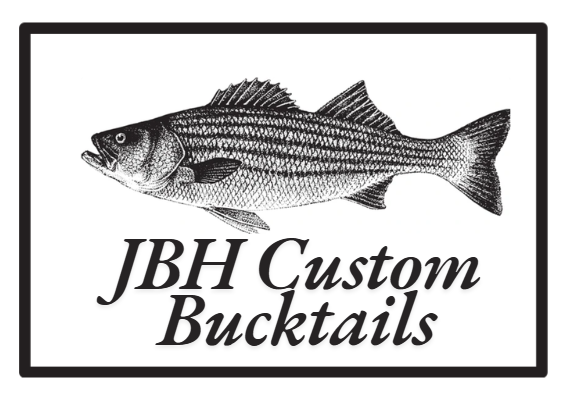
Tips and Tactics: Where to cast when Bass are blitzing on the surface-From the boat.
Share
Tips and Tactics: Where to Cast When Bass Are Blitzing on the Surface — From the Boat
If you’ve ever found yourself surrounded by crashing stripers while out on the boat, you know how intense and chaotic a surface blitz can be. But just because fish are feeding aggressively doesn’t mean every cast is a guaranteed hook-up. When you're fishing from a boat, positioning, casting angles, and depth control become even more important—especially when throwing a bucktail.
Here’s how to capitalize on a blitz from the boat and find those bigger bass lurking just beneath the madness.
Read the Blitz Before Charging In
First rule of boat fishing a blitz: don’t run through it. Approach slowly, preferably up-current or upwind. Kill the engine early and use your trolling motor or drift into casting range. This keeps the school active and feeding naturally.
Take a moment to observe:
-
Are the fish herding bait in a circle or moving in a line?
-
Are birds diving tightly or scattered?
-
Is the bait tight to the surface or getting pushed down?
Understanding the pattern helps you decide where to cast and how deep to fish.
Where to Cast from the Boat
Boat anglers have a distinct advantage: casting angles and mobility. But even with that freedom, placement is key. Bigger stripers often stage off the main school, using the chaos to ambush easy prey without competing with aggressive schoolies.
When throwing a bucktail from the boat:
-
Cast just ahead of the school’s path if they’re moving. Let the lure sink and swing naturally into the feeding zone.
-
Target the edges of the blitz, especially down-current where stunned bait often drifts.
-
Make longer casts across the periphery rather than dropping directly into the center. This avoids spooking the fish and puts your lure in the zone where the smarter, larger stripers wait.
Use the boat’s position to quarter your casts and cover more water at different angles.
Dial in Your Depth: Bigger Fish Hang Low
On a boat, you can take full advantage of the water column—and that’s where bucktails shine. While schoolies and bird activity are up top, the bigger fish are usually sitting deeper, letting the smaller ones drive bait down toward them.
To reach them:
-
Let your bucktail sink 5–10 seconds depending on depth and current before beginning your retrieve.
-
Try a slow jigging motion near the bottom if marks are showing deep on your fishfinder.
-
Use short lifts and controlled drops to mimic a dying baitfish fluttering beneath the surface action.
A bucktail gives you the subtle, natural presentation needed to entice a wary cow bass that’s not actively slashing at the surface.
Gear Tips for Boat Anglers
-
Use a braided main line with a fluorocarbon leader for better feel and depth control.
-
Opt for bucktails in the 1 to 2 oz range, depending on current, depth, and drift speed.
-
White, olive, and bunker patterns are go-to colors. Keep a few with trailers (like pork rind or curly tails) for added action.
When the blitz goes off and you're in the right spot on the boat, don’t just bomb casts into the chaos. Slow down, think like a predator, and fish the edges and the depths. A bucktail worked smartly from a boat is one of the most effective tools for pulling big stripers out from under the frenzy.
So next time your fishfinder lights up and birds start diving—position right, cast smart, and let that bucktail do the dirty work.
